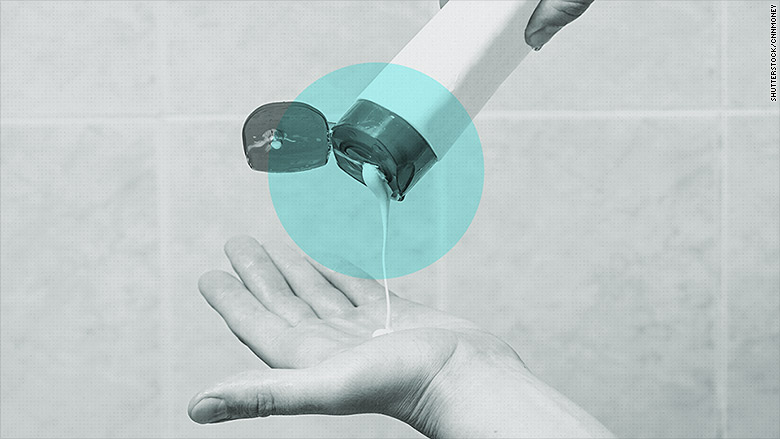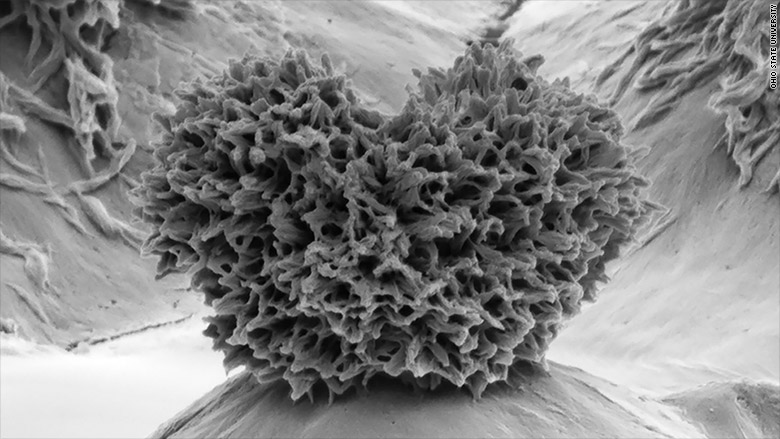
There are two kinds of people in the world: Those who toss shampoo bottles before they're empty, and those who hit bottles against the wall until shampoo comes out.
For the latter, reprieve is in sight.
Nanotech researchers at Ohio State University have found a way to make plastic bottles repel liquids like soaps, detergents and shampoos.
Their methodology involves forming little heart-shaped speed bumps on the insides of bottles so liquids can't spread and stick.
To create these little road blocks, engineers developed a solution of solvent and microscopic silica particles. When applied to a plastic surface, the solution softens the material and embeds the silica.
After the solution hardens, the silica structures stick out, creating pockets of air. Those air pockets cause substances like shampoo to form beads and roll off a surface rather than cling to a it, because the liquid can't maintain its shape between the structures.

Related: This ultrasonic dryer will dry your clothes in half the time
The science behind the invention is surface tension -- how much molecules like to stick to one another other. Soaps have very low surface tension and like to cling to other things.
"We have developed the process and applied for a patent. We hope to license it to a bottle manufacturer or a third party," Bharat Bhushan, director of the nanotech lab, told CNNMoney in an email. Developing a product that can be manufactured can typically take one to three years, he added.
The idea for the project came at the suggestion of a commercial shampoo manufacturer, but the company did not provide funding.
Bhushan admits that he and his team are solving a "first-world problem," but that manufacturers are interested in making sure their products don't go to waste.
Another benefit might be recycling.
Shampoo bottles are made from a common type of plastic that's been recycled more and more in recent years. About 44.2 million pounds of polypropylene, a "number 5" plastic, were recycled in 2013, and 45.6 million pounds were recycled in 2014.
Plastics generally have to be rinsed completely clean before they can be recycled, so if people don't have to do as much work to clean their bottles, they might end up recycling even more.

